
Markegard Family Grassfed
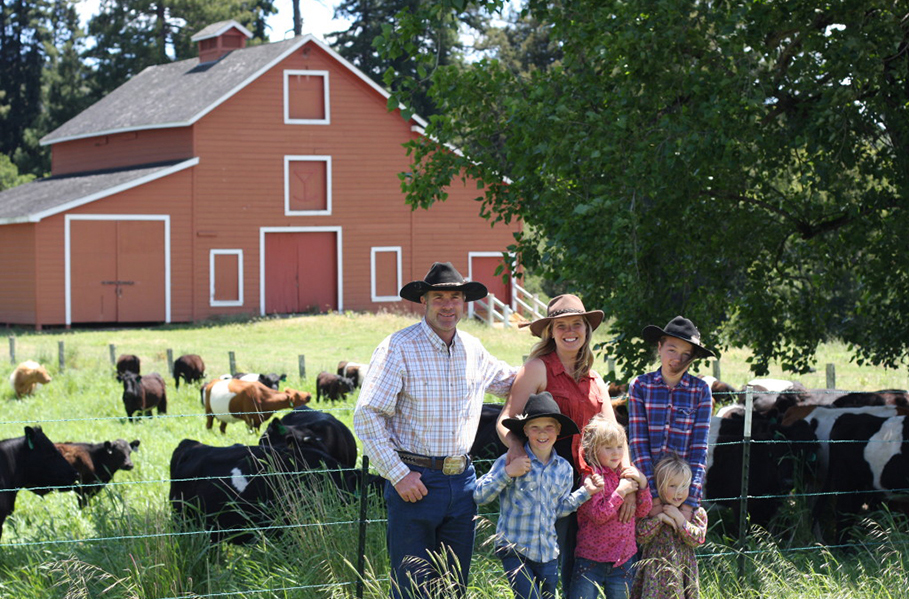
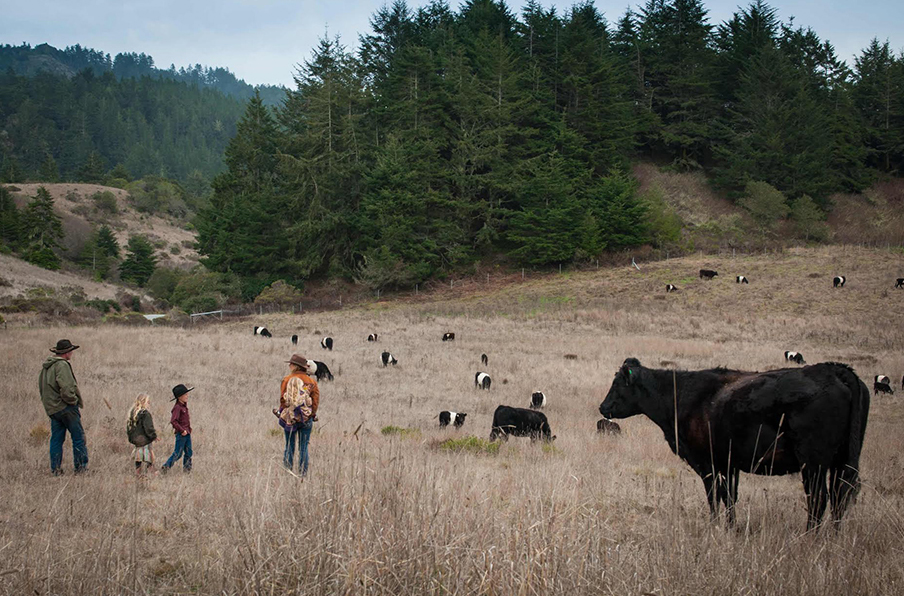
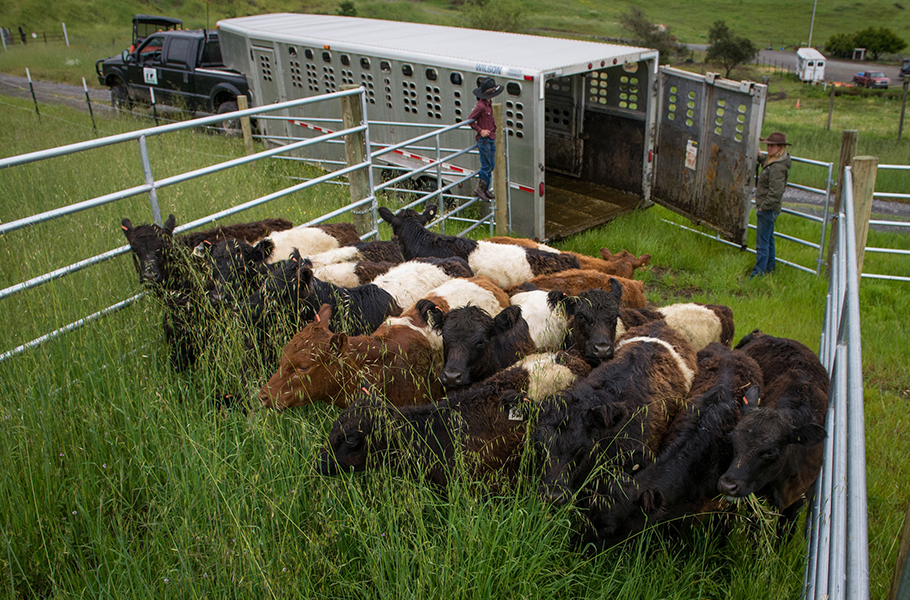
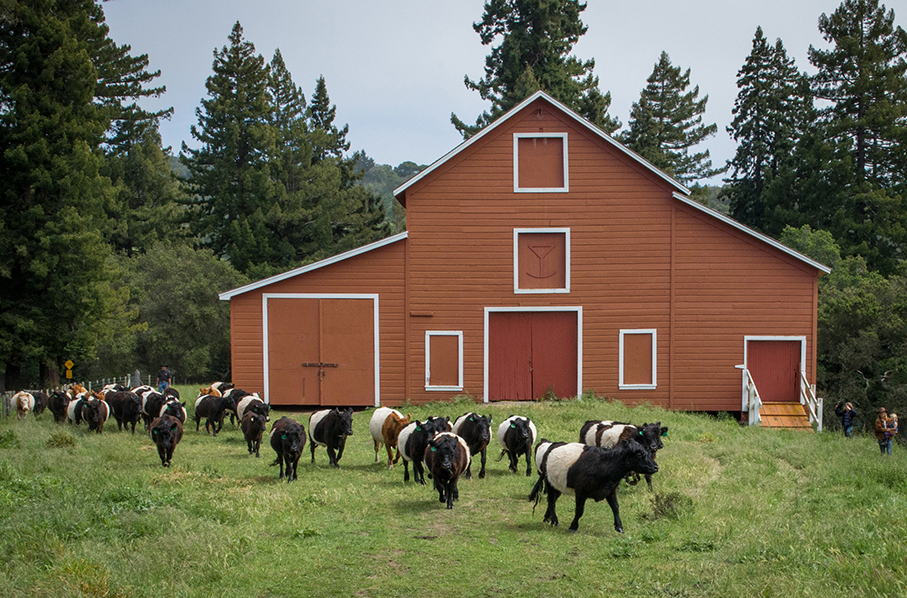
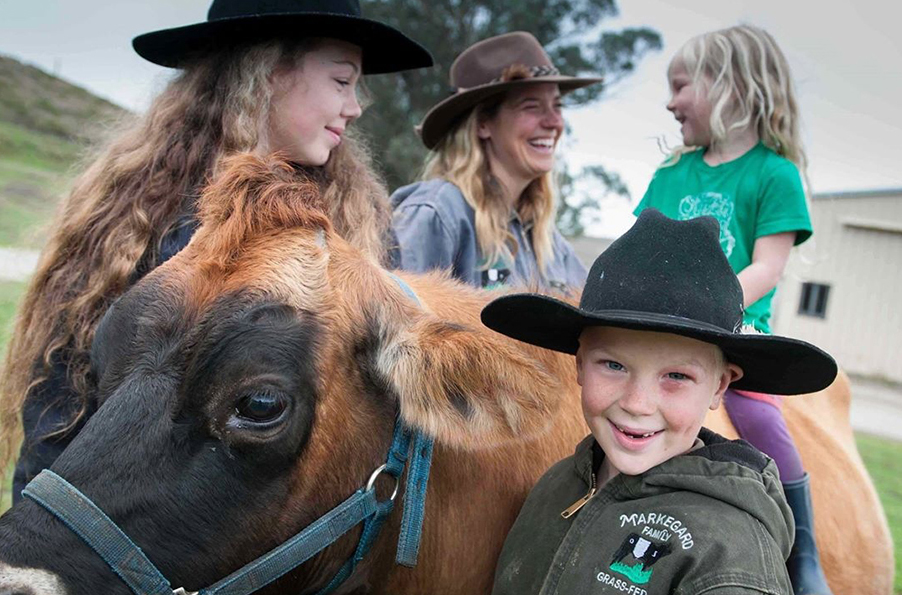
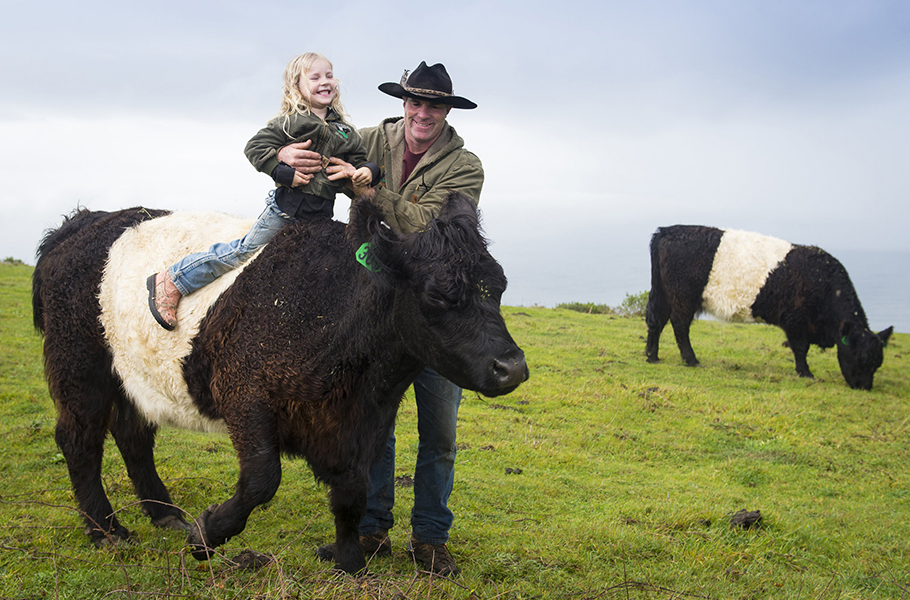
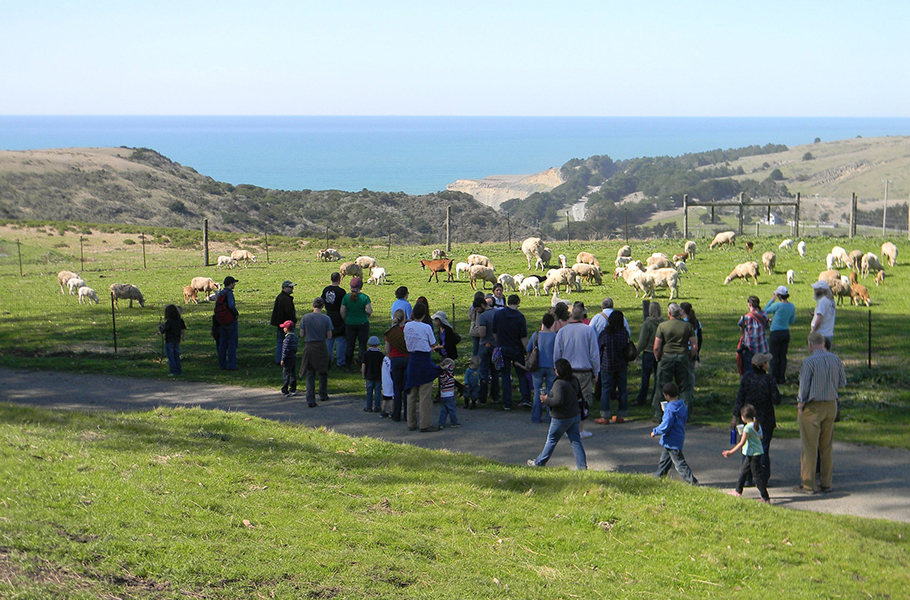
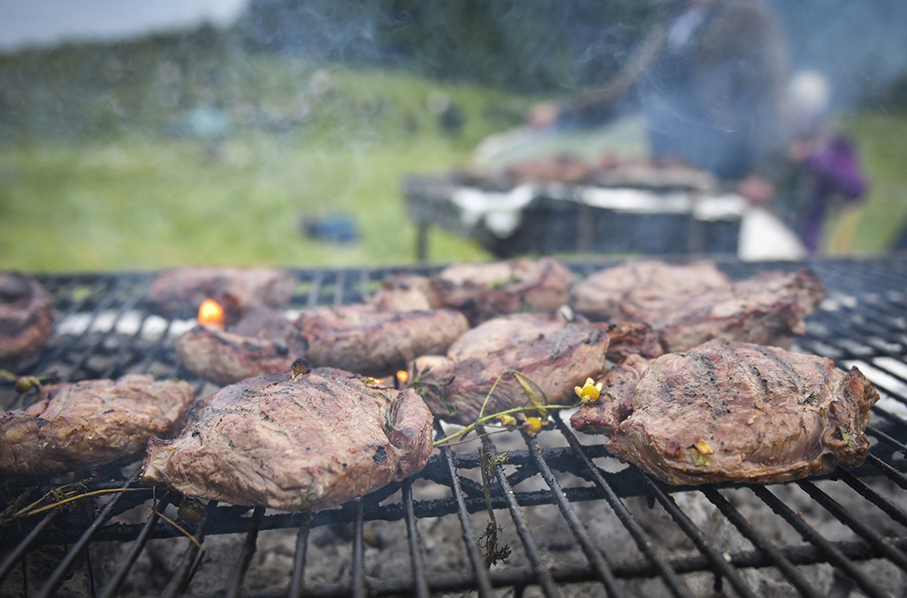
Markegard Family Grassfed has been providing regenerative meat to their local community for more than 15 years (as of March 2021). In addition to their home property of 1000 acres in San Gregorio, CA (in the San Francisco Bay area, just south of Half Moon Bay), the Markegards rent several properties in three different counties for their grassfed operation. These include large land trusts, private landowners and regional open space parks, for 11,000 acres total. They don’t manage for other people but each ranch has a grazing plan and conservation management plan developed in conjunction with landowners and the Natural Resource Conservation Service. The Markegards started with grassfed and grass-finished beef but have since expanded into grassfed and grass-finished lamb, pasture-raised chicken and forest-raised pork. Everything is direct marketed through their own label, mainly through farmer’s markets and online sales.
Doniga Markegard talks about how she came to this style of ranching in the following video.
Regenerative Practices Lead the Way
The Markegards' intention in grazing is to manage the cattle herd to simulate the large herds of elk and antelope that used to roam on California’s grasslands. They do this by keeping the herd moving with Holistic planned grazing. The idea is to never overgraze an area, but to stimulate growth and grass-land health through properly timed grazing.
Doniga Markegard explained that each ranch has its own management plan based on its history and what has worked in the past. “The thing I boil it down to is 'we move.' We move the animals. You can explain it until people fall asleep. You can get technical with we have this many paddocks and this many animals per acre, or you could just say ‘we move!’ The animals are on the move. They’re bunched up and they’re moved, and they’re following the cycles of that grass plant. And that works incredibly well where you don’t need to add compost. You don’t need very expensive inputs to sequester carbon. You need to be out there on foot or on horseback or with a UTV moving your animals! That’s what you gotta do!”
They are also very committed to watershed stewardship of the land that supports them. Additional management practices they use that they consider to be regenerative include keyline design, catchment ponds, permaculture, and carbon farming. Supporting biodiversity is also essential to their decision-making process. They believe a farmer or rancher should care about biodiversity because “biodiversity above ground mirrors biodiversity below ground. If you have multiple species of plants above ground, then you’re going to have multiple different species of microorganisms and roots and fungi all related and interconnected to create a functioning soil food web. The soil cycles, the carbon cycles, are going to function better because there’s integration and symbiotic relationships. Certain roots are going to be able to tap down farther and get to moisture that other roots aren’t and they’re going to share all that information and benefit of the nutrients in the soil.”
Doniga’s philosophy goes beyond the specifics: “There are very many ways to apply “regenerative” whether it’s on the social or environmental or economic aspects. What I like to say is that we create more life than every life that is taken. And this shows up in the data. We work closely with Point Blue Rangeland monitoring network. The ranches that we are stewarding have had really impressive results in terms of more carbon sequestration, higher percentage of perennial bunch grasses, higher diversity of plant species. Birds that are on the decline in the rest of the state are increasing on our ranches. Like the Grasshopper Sparrow. So that’s how I like to look at it. It’s regenerative and that’s really where my passion lies. I don’t want to do anything that’s harming life. I don’t want to do anything that’s ‘less bad.’ I want to do something that is regenerating life with the actions that I take.
And then if you look at it in terms of just our family—we’re family owned and operated—so we plan to leave the land better than we found it for our children and for the future generations. That’s really important to us that we can steward the land for the future.”
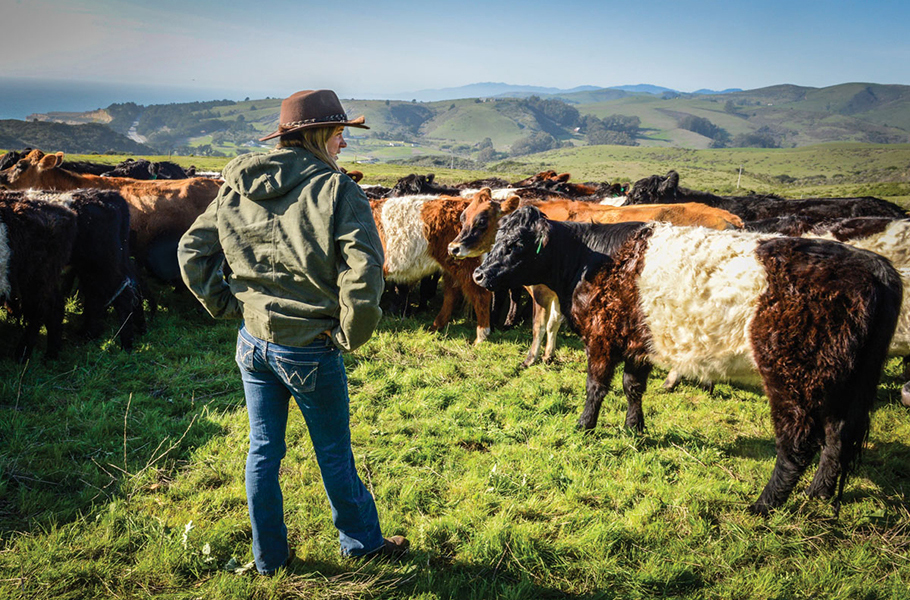
Challenges
Doniga Markegard explains that for her and her family doing ranching in this fashion is mostly a lifestyle choice and a choice based on values. “We’re kind of breaking out of the mold . . . I can’t say that it’s making us more money—I can’t claim that—than if we simply managed other people’s ranches or did consulting or something else. It’s still agriculture and there’s still a very small profit margin. And it’s a lot more labor intensive to do what we do. However, it has enabled us to really forge relationships that if we were just doing agriculture in terms of making a profit or even just supporting ourselves we wouldn’t have had access to. It’s those relationships that have made it possible for us to build that scale that we need to support our family and have right livelihoods and pay our staff well and all the things of running a business.”
“The challenges that we’ve had building up our brand is there’s a lot of education at the beginning. And we really needed to make sure to bring people along with us on the journey so they could understand all the challenges. And it’s really a fine line. Pre-Covid we did a lot of ranch tours which were very popular. People wanted to come out on the ranch but if I started talking about all the challenges that we have in agriculture, people would start complaining. ‘She just wants to talk about this or that.’ That’s kind of reality but people want to believe that farming and ranching is so romantic, and since we’re charging $30/lb for a steak we must be doing so well and be out on our horses cruising around with our family. But no, it’s hard work! We work seven days a week. We’re always working and we can’t possibly add up our labor and say we can pay ourselves as owner-operators. You just get depressed if you think you have to do that. So we tell people that if you’re going to get into this, it’s a lifestyle choice. It’s about quality of life and enjoying the work, being able to work with your kids and bring them along the journey, and have that relationship with land that is so rare now.”
The Dual Crises of the Wildfires of 2020 and Covid-19
Flexibility and the willingness to learn new things is essential for success in regenerative farming and ranching. But that attitude also came in handy last year as many farmers and ranchers in California needed to cope with both the pandemic and historically outsized wildfires.
“We lived through a solid month of crisis in August. That’s just the nature of California. We’re living in a fire ecology and we have to do whatever it takes to be prepared for the next one. We can’t just sit back and say ‘It’s going to be another 40 years.” No! It’s going to happen again this year. Are we ready? No. We’re not ready.” But cattle can help with preparation. “One of the primary goals of the agencies we lease land from is to have the cattle there for fire mitigation and for fuel load reduction. Cattle are a tool for that.”
The Markegards also found that being forced to change helped them make their business more profitable and hopefully more resilient for the future. “We were already primarily selling direct to the end consumer . . . but we never really pushed our online sales too much because we had a website that was taking too large a percentage. And we had this clunky membership app and the technology was not working for us to be able to scale. So it’s amazing because then we just said ‘okay, let’s stop doing our membership the way we’ve been doing it, reimagine it, figure it out. What we started eight years ago isn’t necessarily going to apply to the people who are here right now in the Bay area in 2020.’ The demographic has shifted rapidly!
So as a farmer or a rancher we were just chugging along—this is what we did last year so this is what we’re going to do again—but Covid forced us to say, okay, these aren’t working! We could be retaining so much more of the actual sale if we created our own website. So we hired this amazing web designer to create the whole website. Instead of the platform taking 6% of sales, all of a sudden it’s only taking the credit card fees.
And then we reimagined our membership programs so that we weren’t spending all this staff time every week trying to track members and having a total headache. Instead we could have a membership program that could scale, and we could focus more of our energy on those important relationships and telling our story instead of all the busywork of trying to do accounting. So we really shifted our technology which then boosted online sales. Before our online sales were, like, 10 – 15%. Now they’re 50.”
Looking to the Future
“For us, we love being on the land. We love working with cattle and horses and being out there. So when we first built this business, I needed to be doing everything! Because it’s a learning curve, and it wasn’t like you could just go and create a job description and hire someone because it was all new! People weren’t direct marketing meat. They weren’t figuring out how to process in California. You had to create everything from scratch. So now going into the future, we’re looking at providing that opportunity to employ more people. We boosted the number of people that we employ so we’re providing more jobs that are still agriculture wages but pay a bit more than most farms. So we feel like we’re not only providing that experience and something that people feel good about but we’re providing a decent wage for folks, too. So that’s important to us.
Addressing that gap of who we serve and the people who can actually afford our meat. . . Our meat is not going to get less expensive; however, by being a successful business we can give back in many different ways to our community. So we can give our meat away for free, if we’re successful, to the disadvantaged communities in our region. By being a successful business we can do more for the environment. We can spend more time moving our animals which is better for the environment and the watersheds and the salmon and the birds. So I think that where we want to go is we want to be more financially viable so we can give back even more.”
Doniga Markegard has been expanding into public speaking, policy and advocacy. She is also the author of two books: Dawn Again and Wolf Girl. Her most recent book Dawn Again is about what she learned through her experiences as a wildlife tracker and how it informs what she does today.
